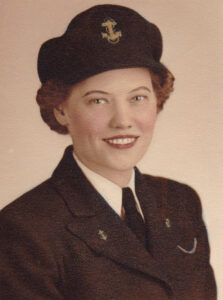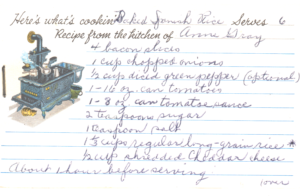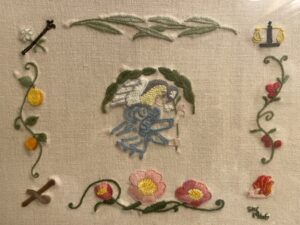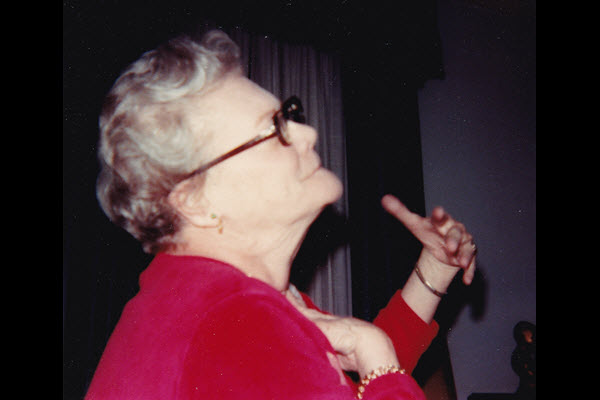Recipe
Baked Spanish Rice
Ingredients
4 bacon slices
1 cup chopped onions
½ cup diced green pepper (optional)
1 – 16 oz can tomatoes
1 – 8 oz can tomato sauce
2 teaspoons sugar
1 teaspoon salt
1 1/3 cups regular long-grain rice*
½ c shredded cheddar cheese
*Or use 1 cup parboiled rice and add enough water to tomato liquid to make 2 cups.
[Editor’s Note: Follow the asterisk!]
Method
About 1 hour before serving:
Preheat oven to 350°F.
Grease 1 ½ quart casserole
In large skillet over medium heat, fry bacon until crisp.
Drain bacon on paper towels, crumble, and set aside.
Pour off all but 2 Tablespoons of bacon drippings.
In hot drippings, cook onions & green peppers until tender, stirring often, about 5 minutes.
Into measuring cup, drain tomatoes. Add enough water to tomato liquid to make 1 ¾ cups.
Cut up tomatoes.
Add to onion mixture: liquid, tomatoes, tomato sauce, sugar, and salt.
Heat to boiling.
Remove from heat and stir in rice; pour into casserole.
Cover casserole and bake for 35 minutes or until rice is tender.
[Editor’s Note: It will likely be closer to 50 minutes before the rice is tender.]
Fluff rice with fork.
Sprinkle with cheese.
Bake 5 minutes.
Garnish with bacon.
Recipe Story
So the recipe isn’t that great, but…
Auntie Anne gave me the recipe for Baked Spanish Rice as part of a wedding shower gift. Each guest had been asked to bring a recipe card with a favorite recipe.
I can’t say the recipe itself holds much of any significance. I don’t remember her ever making it. The one time I made it, the rice was still hard when it came out of the oven. (The recipe was a bit misleading.) I don’t think I ever tried to make it again.
No, Auntie Anne wasn’t much of a cook. But as I think back on her life, I realize she was a fantastic party planner.
She was the one setting up big family celebrations. She was the one inviting over all the relatives and friends. She was the one handling the entertainment (and any alcohol that might be involved). And (rightfully so) she left the cooking to her sister, Auntie Madge.
There were lots of parties. Birthdays, July 4th, New Year’s Eve, and so on. When she and Auntie Madge and Uncle Paul lived at the end of mountainous and heavily wooded Oak Drive in Leetsdale PA, their house had a giant screen porch attached to it. That’s where we ate, all 20 or 30 of us. But the action was elsewhere.
For several years, she had Uncle Paul set up a badminton court in the back yard. We played all summer long. One year, she had acquired a 22 rifle and taught us how to shoot on a makeshift range. Eventually, she had an above-ground pool installed.
To keep us entertained once summer was over, she bought a pool table. It was squeezed into a room so small we had to tilt our cue sticks at a sharp angle to make some shots. We didn’t care. I got to be a pretty decent pool player.
Auntie Anne always made sure there was something fun for guests to do, beyond just sitting and talking. Even if it was just watching a fire burn. She would often buy special chemical powder for making colored flames in those fires she always insisted be lit in the colder months.
When the three of them (Anne, Madge, and Paul) moved to a larger house, the outdoor pool she installed was even bigger and deeper. They no longer had a screen porch, so meals were out on the open patio. But that was fine since we kids were coming to the table wet anyhow.
Auntie Anne may not have been skilled in the kitchen, but she knew how to draw people to her and make them feel welcome.
When I think back to parties I’ve hosted, I can see her influence in my own planning. I’d much rather let others do most of the cooking. But I really enjoy planning activities for the children in attendance, so they won’t get bored just sitting and listening to adult conversation. I think Auntie Anne would approve.
My Reflection
Let Your Light Shine (Even from the Closet)
Bits to Anne
with continuing love
Christmas ’72
This simple inscription in an old book of poetry led me to a new understanding of a family member and how to let your light shine, despite challenges you might face.
The year was 2005. I had been systematically skimming through my modest collection of poetry books. Son #2 had a school project.
Down came the slightly yellowed copy of A Treasury of the World’s Best Loved Poems from its place on the shelf. My thoughts turned to the day my cousin Linda had offered me great-aunt Auntie Anne’s books after she died. None of the other cousins wanted them.
I opened the book to see if it contained a poem suitable for the school project. But before I could get to the poems, there was that inscription just inside the cover… Bits to Anne with continuing love.
Huh. Funny I never noticed it before.
I stood there, transfixed, wondering what it could mean. Bitsy had been Auntie Anne’s close friend back in the late 60’s. They had vacationed together every summer for a number of years. The vacation was always taken on a boat—Bitsy’s boat, I think—off the coast of Maine. Just the two of them, and Bitsy’s young son.
With continuing love. Not something one woman usually said to another. Unless…
Suddenly It Hit Me
Maybe Auntie Anne was a lesbian.
The more I mulled over this theory, the more it explained things.
It explained the odd response I had gotten from Auntie Madge (her sister) when 9-year-old-me had asked why Auntie Anne had gotten a divorce after just one year of marriage. “Marriage and Auntie Anne just didn’t get along,” Auntie Madge had told me.
It explained the decidedly feminist career path she had pursued as a single woman long before feminism was a thing. Albeit one who, since the divorce, had the more-socially-acceptable name of Mrs. Gray.
She had made the not-so-typical choice of volunteering to be a union representative in a factory in the 30’s. And had served in the Navy Waves in the 40’s.

Auntie Anne had gone back to school on the G.I. bill, earning first a BS in 1950, then an MS in Speech Pathology in 1952. This was followed by a rather illustrious career working with cerebral palsy (CP) patients at the D.T. Watson Home for Crippled Children in Leetsdale PA.
She had published a technical paper. She had invented the blo-blok drinking straw attachment to teach mentally challenged children how to suck in the liquid instead of blowing bubbles. In the mid-1960s, she had been invited to Bogota, Colombia to help establish a new program for CP patients. And she had been listed in the First Edition of “The Compendium: Persons of Eminence in Exceptional Education.”
None of this would raise suspicion in the 21st century, or even in the late 20th century. But it was not typical for women of her generation, most of whom were at home busily raising their families.
Being a mom wasn’t the light she had inside her. But Anne Shinn Gray definitely let her light shine in the way she cared for her much-loved CP patients.
She Wasn’t Like Other Women I Knew
Beyond her professional accomplishments, there was her lifestyle and personal style.
Hard drinking. Chain smoking. Always driving a sexy convertible, even into her 60’s.
Short hair. Not mannish, but not fussy or stylish, either.
Always in a suit, either a waist-length jacket and straight skirt, or a similar jacket over a plain sheath dress. Dark colors. Nothing pretty or breezy like my mother wore.
Then there was the way she could, and frequently would, take control of a roomful of gathered family members. She would regale us with stories from her travels and business dealings with great drama and—now that I thought about it—rather manly bearing.
And there was that one time, as we were leaving her house after Christmas dinner, when Auntie Anne (smelling of whiskey) had French-kissed my sister.
Had it only been one or two of these things, I could have dismissed it. In fact, it had taken me decades to see the pattern. But now, putting it all together, I could come to no other conclusion.
As the memories came crashing over me in giant wave of insight, all I could think about was how she must have felt having to keep her true self hidden from most of her family.
Who Had the Truth?
I had to know the truth, the real story.
Unfortunately, I had few options left for finding the truth. So many of those who would know had passed away, years before. My mother, my grandmother (Madge and Anne’s sister), Madge, Anne herself, Madge’s husband Paul… all of them were gone.
I had moved to another state and lost touch with the cousins in my generation. After almost a decade of silence between us, I had no contact information for any of them. (And Facebook wasn’t a thing yet.)
My only real option for getting the truth was my dad. But he was suffering from dementia. I called my step-mother, Lois. She and my dad had gotten married not long before Auntie Anne had passed.
I asked Lois, “Was Anne a lesbian?” With no information of her own, she promised to ask my dad when he was having a lucid moment. Surely he would know.
Lois called back a few days later. He had told her, “I always suspected, but I was never sure.”
Say What???
My mom had been close to Auntie Anne. She had done Anne’s Christmas shopping for years. Growing up, she had lived at Madge and Paul’s house for a time. Probably Anne had been living there, too.
So how could my dad not know the answer to this question?
She Spent Her Whole Life in the Closet
How deeply had Auntie Anne had to bury herself in the closet? How horrible was it for her to have to guard her words on certain topics? How disheartening to have to sneak away to be with someone she loved?
What must she have gone through?
What was worse, I wasn’t sure how supportive I could have or would have been had I known the truth while she was alive. I had gone through a pretty judgmental, Bible-literalist phase in my 20’s. (Auntie Anne died when I was about 30.)
I drew comfort from the fact that at least her sister and brother-in-law, Madge and Paul, had stayed close to her. I had spent untold hours at the various houses the three of them shared over the course of their lives. Pooling their money together, it had been a mutually beneficial arrangement.
I also drew comfort from the fact that I knew Auntie Anne to be a woman of great faith. She had had a spiritual experience, a vision, involving the Angel Gabriel, that had given her a remarkable sense of mission and determination. (See the section In Her Own Words below.) Anne never doubted that God was with her and that the work she was doing with CP children was her unique contribution to the world.
She changed the lives, and the families, of “her” kids. Dolly (Verlinda), Moe, and so many other CP patients she helped took the place of children in her life. And under her expert care, they lived much longer, happier lives than anyone ever expected.
The Lesson: Let Your Light Shine, No Matter What
Auntie Anne showed me what it was to be a professional woman who wasn’t afraid to let her light shine, using every talent God had provided. After a childhood spent watching her being bold and brash, and succeeding in a man’s world, I never felt any hesitation in reaching for my own professional dreams.
Even now, when I watch Danica McKellar inject little bits of mathematical encouragement into every Hallmark movie she’s been in, it reminds me that math-phobia among pre-teen and teenage girls is still a thing. But it never was for me. I owe a lot of that to Auntie Anne.
No, Auntie Anne never, ever hid her light under a bushel. Just her sexuality. I still feel bad about it.
In Her Own Words
The Testimony of Anne Gray
[Editor’s Note: Anne herself composed the following document, probably around 1980. She typed it up on plain typewriter paper and left it for her family to find upon her death in the mid-1980s. It appears here verbatim, except for minor corrections in spelling and punctuation.]
When I was growing up, my father stressed to his children that God had given gifts to each one of us, and it was our responsibility to discover and develop those gifts (or talents) and return them to our Heavenly Father in service.
This intrigued me, and I was never unaware of that obligation.
Along the way, my greatest interest (and apparent gift) was in the area of communication skills and human relations, and I felt deep concern and sympathy for those who had difficulty in those areas.
Led by those feelings, I majored in Speech Pathology in college.
In a classroom discussion of speech and language problems, I asked which problems were the hardest to overcome. I learned that the cerebral palsied children had the greatest difficulty communicating. “Nobody wants to work with them,” I was told.
This was thirty years ago; at that time, very little was provided for these children and little was known of techniques to train them in speech.
I made that my field of specialization, with confidence in the challenge. They were God’s children. (And here am I, Lord!)
I took extra course work and clinical training. When I finished my training, I was hired to start a speech clinic in a large hospital for crippled children. There were three hundred physically handicapped children. Most were polio cases.
“They respond well to therapy,” I was told. (And they did.) But… one-third of the children had no way to communicate: no speech, no gestures, and little stimulation! I tried, but they could not communicate with me, nor could I “get through” to them.
I panicked. Seven years of college and two degrees had not prepared me for what I faced.
My professional colleagues in the other therapies, and the educational department, plus our expert medical staff, advised me (or flattered me) saying, “You have a lot to give; give it where it will count.”
I felt so inadequate; maybe I’d misjudged myself and my ability. But mostly, maybe this wasn’t my calling! But I only wanted to work with C.P.’s!
I went home and to bed, and tossed about, trying to sleep, when…
Suddenly, I saw my mother (who had died years before) walking toward me, smiling at me, leading a very crippled, beautiful little cerebral palsied girl in front of her. Following her was a very tall man in a black suit.
I tried to see him, but could see nothing but his long legs. I asked, “Who are you?”
He replied: “I am Gabriel.”
Then I realized I was not dreaming. I was sitting up in bed, wide awake, enjoying the scene.
Then it was gone, and I was puzzled. What did it mean?
I went into my father’s bedroom and awakened him. I told him the experience, and asked him, “Why would Gabriel come to me? I know nothing about him except he came to Mary, and will blow a trumpet in the last days.”
My father said, “Go get your Bible and read Daniel 9:22, and you’ll understand.”
I did. And there I read the account of Daniel, who said, “Gabriel came to me and said to me, ‘Daniel, I came to give you skill and understanding.'”
Then I understood.
Throughout my professional life, Gabriel has been my friend, and led me to understandings and skills I would never have known. He has caused great things to happen in those children’s lives, and in the lives of many others because of the skills and understandings he has taught me.
Many times over the years, when I have given demonstrations and lectures, professional people have told me, “We never learned these things in college!”
I have replied, “Neither did I!”
Handwriting Sample
In her own hand…
Here’s a photo of the first part of Auntie Anne’s recipe for Baked Spanish Rice.

Keepsakes
Angel Art
 If you’ve read Auntie Anne’s testimony (In Her Own Words, above), it should be no surprise to hear she had a large collection of angel stuff. Mostly, she had angel figurines…an entire curio-cabinet full. And most of them she received as a gift from someone. Once word got out that she had an angel collection, that’s what people gifted her–another angel.
If you’ve read Auntie Anne’s testimony (In Her Own Words, above), it should be no surprise to hear she had a large collection of angel stuff. Mostly, she had angel figurines…an entire curio-cabinet full. And most of them she received as a gift from someone. Once word got out that she had an angel collection, that’s what people gifted her–another angel.
But she also had a couple pieces of angel-themed needlework. The photo here shows a framed embroidery someone made for her. It features an angel in the center. All the other elements in the piece have some spiritual significance. For example, notice the olive branches (representing peace) and scales of justice at the top.
A few years before her death, Auntie Anne started giving away her angels to family members. For maybe three or four years, when my sister and I would visit at Christmas, our gift was our choice of item from her vast collection. In addition, when she passed away, I was able to take what I wanted from the stack of things other cousins hadn’t claimed.
I scooped up the angel embroidery, the historical documents (including her testimony), a number of books, her classical LP collection, and a little bit of china. I have something of Auntie Anne’s in practically every room of my house, so she’s never out of my thoughts for long.

